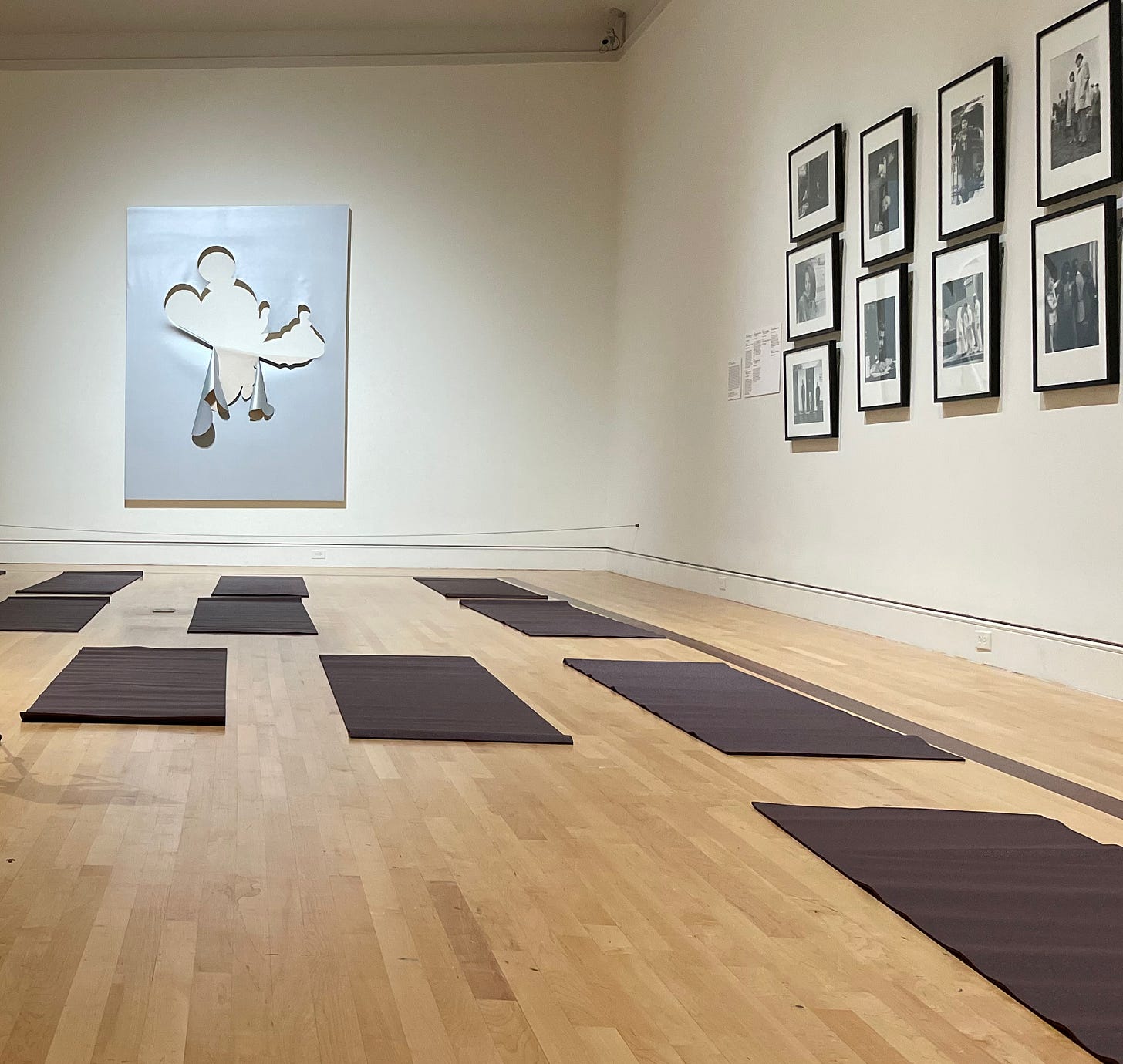It’s a uniquely 21st century experience for the entire world to witness tragedy simultaneously. Millions of eyeballs are locked on computer screens, televisions, and cell phones watching horrors unfold. Lives are being shamelessly stolen, families destroyed, and pain is pounding through every moment of this awful crisis. Thousands of miles away, we feel the reverberations of this pain; our bodies and spirits are impacted by what we are witnessing. Being a global citizen necessitates that we tend to our internal regulatory system, our nervous system.
The nervous system refers to the complex system in our bodies compromised of our brains, spinal cord, and all the nerves that connect the brain/spinal cord to the rest of the body. Your nervous system controls your movements, thoughts, and automatic responses to the world. This article will focus on nervous system “states” rather than the function of the nervous system as a whole.
In these moments, sitting down with our breath to be with our mind can feel utterly petrifying, and also, not that useful when our breath doesn’t fix the horror. However, spiraling in compulsive information consumption, feeling trapped in fear and panic resolves no one’s pain and exacerbates your own.
This post highlights practices that can help soothe your body and mind.
Physiological states dictate our behavior patterns, so it makes sense different soothing practices would be most supportive in different physiological states. Let’s start with three states your nervous system may be in:
Fight or flight response: A sympathetic nervous system response: This is the response activated from an event like “running from a tiger”; all systems are working to keep you alive.
Common emotions: anger, rage, irritation, frustration. Common emotions in the flight stage are anxiety, fear, worry, and panic.
The freeze response: A dorsal vagal state: This is our “emergency” state. In this state, we shut down and can feel hopeless.
Common emotions and mental states: depression, conserving energy, dissociation, hopelessness, feeling overwhelmed.
Rest and digest (also referred to as “social engagement)- A parasympathetic nervous system state or ventral vagal state: Our safety state.
Common emotions and mental states: Grounded, mindful, joyful, curious, empathetic.
If we are in a freeze response, a gratitude list or mindfulness exercise just isn’t going to cut it. Personalizing how we tend to our nervous system helps us to better meet our needs. If you do feel unrelenting hopelessness or feel you are at risk of harming yourself - please dial 988 or use the chat feature on their website.
I have gathered some of my top recommendations and resources I share with clients when their nervous system is highly activated. I have clustered these ideas based on the nervous system state you relate to in this moment (fight/flight or freeze)--but if you find yourself drawn to a specific practice, don’t worry which category it’s in!
The below will not “FIX” your pain (I so wish it could!). In my eyes, these types of practices are to help make the exact moment we are in more tolerable--not eradicating the sensations, but creating a space you might be able to exist alongside them with more peace. That being said, bringing an intention of presence/mindfulness to these practices will increase their effectiveness.
Fight or flight response:
Blast your favorite song, remain standing, and let your body react to the music (dancing welcome, but not required!). Don’t worry about how it “looks”
Release an emotion you feel:
Scream/yell
Cry
Release sounds (wailing, sighing, gasping, whimpering)
Create art
Take a walk outside without your phone
Spend a few minutes shaking your body
Read a funny book
Try a loving kindness meditation put to song
Activate your senses:
Smell:
Essential oils
Citrus fruit
Cooking foods
Fresh sheets
Hot tea/coffee
Your favorite lotion
Touch
Sit or lay on a comfortable seat
Wear soft clothing
Rub your thighs or hands together to generate heat
Hold a mug of a hot beverage
Vision
Go outside and look towards (not “at”) the sun
Turn down indoor lights, use candles, lamps, or even dimming lightbulbs
Move to a space that is visually pleasing to you
Close your eyes to remove the senses activating features
Hearing
Play calming music (I love this song inspired by the Root Chakra)
Turn all noises in your home off
Wear ear plugs to drown out background noise
Hum! Humming can actually help to activate your vagal afferent neuron, which is involved in calming
Moving your body may feel great - usually when our nervous system is activated, lower intensity will nurture us. I love Kara over at Range pilates (free classes are here or her membership can be found here.) or Yoga with Adrienne
Call a trusted loved one or make a therapy appointment
Freeze response:
Expose yourself to drastic temperature change
Stepping outside a crisp fall day with one less layer of outerwear, taking a hot or cold shower, spending time in a sauna at a gym, placing an ice pack on the back of your neck or bottom of your feet - aim to be present on how the sensations in your body change as it acclimates to the temperature
Sooth your physical body - use a heating pad or rice bag on an area of your body you feel tension or give (or go get!) yourself a massage
Lay on an acupressure mat
Witness beauty (art, nature, flowers, poetry, music)
Watching funny TV shows
Listen to a calming sleep story before a nap/sleep (PLEASE listen to this awesome soothing train ride story)
Take a bath
Listen to a guided meditation that feels more like a poem
Feed yourself in whatever way you can (comforting foods could be a day-making highlight)
Give / receive a long hug (60 seconds at least) from a loved one, or from yourself
Journal, or just make a list of things your heart longs for
Spend time in nature
Stretch or sit in childs pose
Call a trusted loved one or make a therapy appointment
This is, of course, not an exhaustive list. How do you soothe your mind, body, and spirit?
References:
The great work of Deb Dana: https://www.rhythmofregulation.com/resources







